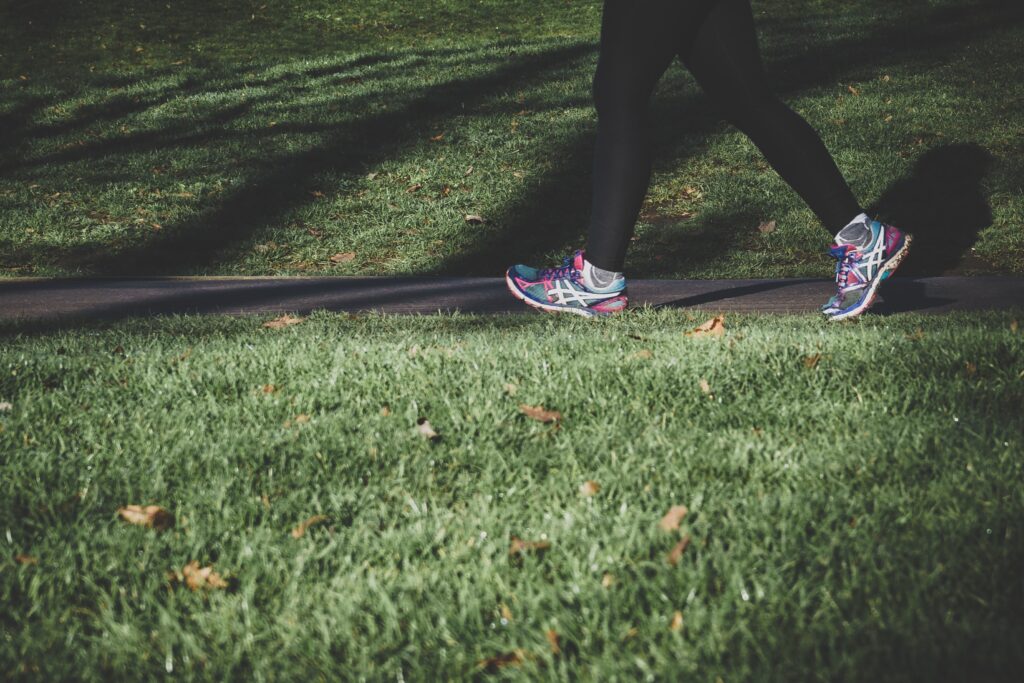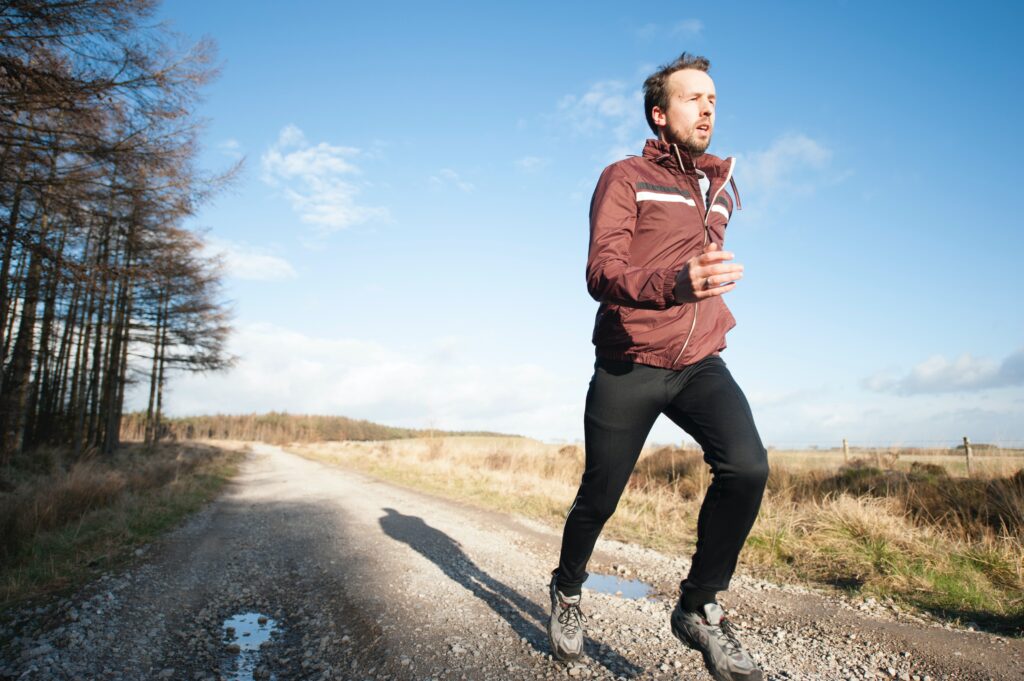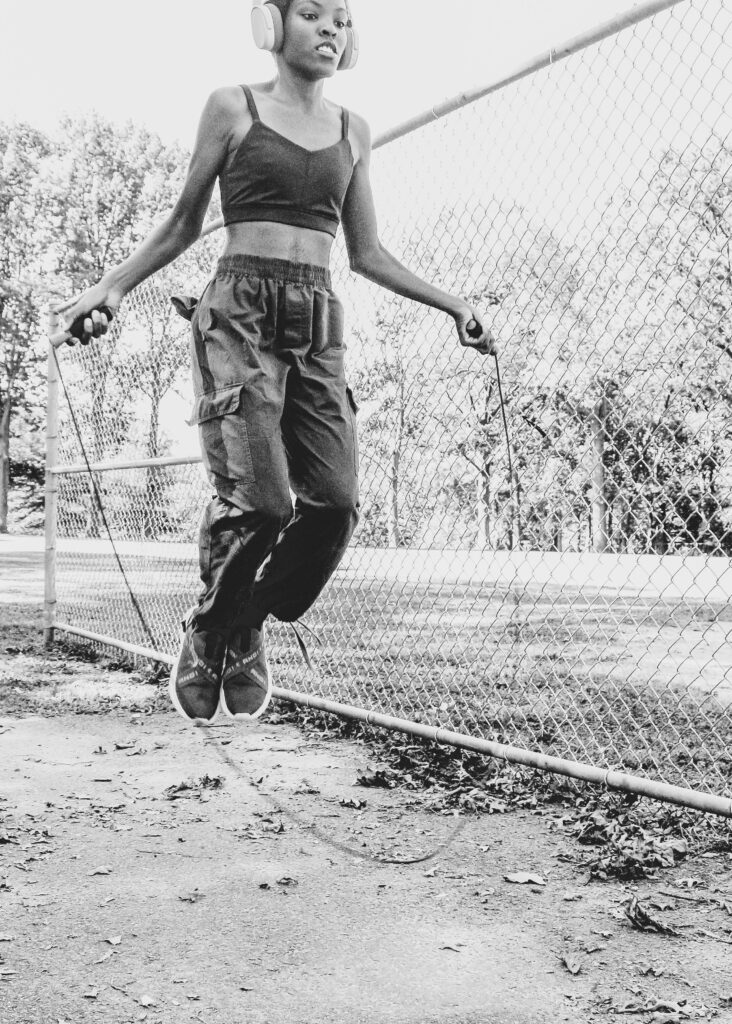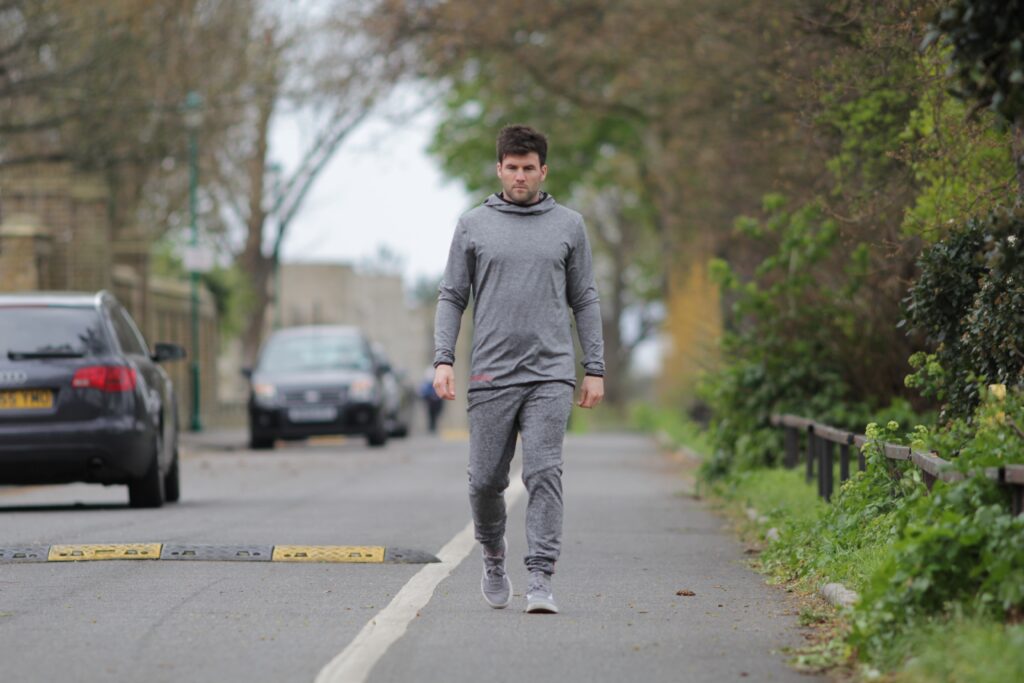Do you hate running? I don’t blame you. Without the right body mechanics or cardiovascular fitness, the idea of going for a run is about as appealing as eating cat food.
But running is also more than about fitness. It is about identity. If you want to learn to run, you first need to let go of any little voice that says, “I’m not a runner. No way. Not me.”
As a non-runner, it is easy to look at runners with disdain. You see all these long-legged, svelte bodies built for running, and can’t help but fall into negative body comparisons. You may think to yourself that you’re just not built to run and foreclose the possibility of ever enjoying a jog. To rub it all in, your jolly neighbor runs by, waving as if she’s having the time of her life.
Why would all these people choose to do something so exhausting and cumbersome?
The answer is that running doesn’t have to feel terrible. In fact, it shouldn’t. Exercise should be a benefit to your life, not a bane. If you properly train and prepare your body, you can run without it sucking.
The good news is that change is in the air. As the weather warms up and the nation slowly opens up post-pandemic, there’s plenty of good reasons to get outside. Running gives you the perfect excuse to get outdoors and do something healthy with your body.
I’m not claiming you will (or even need to) love running. But knowing that you could go for a run if you wanted is an incredible feeling. Plus, why not capitalize on this unique time in history to shed some outdated beliefs about what your body can do. If you want to try running on for size but finding the idea daunting, here’s exactly where to start.
The 7 ½ Minute Out & Back


In the classic fitness book, The 4 Hour Body, Timothy Ferriss describes an obscure track coach named Barry Ross who had his athletes speed walk in the off-season to maintain a baseline level of physical preparedness. The protocol was pretty simple. He would have his athlete pick a path, preferably straight and level, and then walk as fast as possible for 7 ½ minutes in one direction. At the 7 ½ min mark, they would turn around and speed walk their way back to the start.
Sounds straightforward, and for the most part, it is. But here’s the catch:
- You have to make it back to your starting point — every time. This forces you to concentrate and make the second half of your march faster than the first (in running terms this is called a negative split.)
- Each time you go out, you need to walk further than you did before. This forces you to always be improving your speed. It creates progressive overload that makes this speed walk challenging, effective, and fun.
- If you don’t make it back in time or fail to go further than your last attempt, repeat the walk again. If you fail the second attempt, call it a day and repeat it tomorrow when you’re fresh.
What you end up with is 15 minutes of furiously fast walking. It’s not a stroll. It’s a serious all-out effort that forces you to focus and make the most of each step.
You may look a little weird doing it. (I got plenty of looks as I tested this out in my neighborhood.) But if you stick with it, at a certain point, your body will not only be ready to run, but it will want to run rather than walk.
Yes, believe it or not, your body will say to you, “I’d rather be running right now.”
Amazing, huh. Here’s why it works.
Walking Fast Makes You Want to Run


Trying to cover more distance without letting one foot leave the ground is actually a lot of work. Above a certain speed — the preferred walk-run transition speed (PTS) — walking actually requires more muscle fiber work than running. As a result, your body will naturally want to shift into a running gait as you try to ramp up your speed and distance.
What enables your body to minimize muscle fiber work above a certain speed is the shift to tendon energy storage. Your foot, calf, and achilles tendon collectively act as a spring-like mechanism that helps propel you through the air.
Learning how to use your tendons to store elastic energy is a hallmark of good running form. Unfortunately, walking alone won’t do a good job training this critical part of running preparedness.
That’s why there’s one more piece to the “Hate Running” Program that gets your body run-ready — jump rope.
The Missing Link In Getting Run Ready – Jump Rope


What separates running from walking is not just the speed of the movement, it is the fact that running has a lot less ground contact time. In fact, while running you may spend as much as 30% or more of your time “floating” through the air. (See image below)
Every time you land on one foot, there’s a lot of impact forces that require a greater amount of work done at your knee and ankle compared to walking. This poses a challenge that walking, even speed walking, can’t fix: how to prepare your legs for the shock and repetitive impact of running.
Thankfully, skipping rope is a super low-tech way to help your lower legs develop the bouncing proficiency they need to run with ease.
Jump rope teaches your body how to store elastic energy in your fascia and tendons. This sophisticated pre-stretching and tensioning of certain muscles is referred to as the stretch-shortening cycle and helps you absorb and transmit force, recycling some of the energy from landing and turning it back into useful momentum.
Training the stretch-shortening cycle increases the efficiency of your locomotion. This is why adding in rope skipping can build your capacity to bounce with ease and help your body get run-ready.
The Science
If you’re into the nitty-gritty biomechanics of why this program can help you get ready to run, here is some of the science.
Increased Stride Cadence
Stride turnover, also known as running cadence, is a measure of your steps per minute. Cadence is highly individual. It varies based upon your limb length and nervous system, but generally speaking, a higher cadence creates less impact and greater ease when running.
Researchers have found that many elite distance runners have a cadence of above 180 strides per minute — we are talking a pretty damn rapid turnover.
Since a lot of people overstride, especially when learning to run or trying to go fast, focusing on increasing your stride cadence (i.e. shorten your stride) can reduce the load on your hip and knee joints helping your body to move with less effort and impact. This is what we’re going for: making running easier on your body.
The 7 ½ minute Out & Back forces you to increase your cadence as your primary method for going faster and further. Once you finally start running, you’ll already be primed to keep those feet rapidly turning over beneath you.
Increased Neural Activation
If you actually want to increase your distance each walk, you need to concentrate on speed. These 15 minutes are like a mini-race (which I found actually makes it more engaging.)
Speed is a particularly difficult thing to train, especially when you’re bound by keeping one food on the ground. You need to focus on making each step as powerful as possible and then as quickly as possible engaging your other foot. This requires a lot of mind-muscle awareness.
Specifically, you are training your nervous systems to quickly contract, relax, contract, relax. The rapid relaxation in the middle is critical to increase the speed of the movement. This fine-tuning of your nervous system helps the muscles contract forcefully so you get the most propulsion from each footfall.
This isn’t to stay that increasing your overall leg strength won’t help your running (i.e. still do your lunges). But neural adaptations happen relatively quickly compared to muscle growth, which is encouraging for newbies who want to see improvements fast.
Progress is motivating. Another reason this speed walk/jump rope combo is the key to no longer hate running. Both require effort, but the workout is not meant to be difficult. The challenge quickly becomes more fun (i.e. can I make it further this time) than suffering. Making exercise enjoyable is the key to sustainable physical activity.
Jumping & Walking Builds Aerobic Capacity
While 15 minutes doesn’t seem like a lot — another reason I love this approach is that it can be easily slipped in between meetings during the day — revving those legs to the edge of your walking capacity is enough to crank up your heart rate a bit. The same is true of jumping for rope for 30 to 50 seconds. Neither will cause astronomically high heart rates, but that’s neither the point nor necessary to train your heart and lungs.
To get better at running, you need to build your aerobic base. This means getting your body efficient at sustaining a low to moderate level of exertion without going switching over to anaerobic energy production.
One reason so many people hate running is that from the get-go, it is already anaerobic. In other words, running shoots your heart rate so high that your body is primarily producing energy from burning sugar without oxygen. This generates a build up of lactate, causing that burn and fatigue that is impossible to sustain.
Learning to move while staying in a lower heart rate where your body can primarily burn fat for fuel is an essential adaptation for sustainable running.
There is a misconception that the value of your workout is dependent on how high you got your heart rate. However, if you’re learning to run, you actually want to keep your heart rate as low as possible. The majority of your running should be relatively easy. You should be able to hold a steady conversation.
The 7 ½ Min Out & Back and the jump rope gives you the opportunity to elevate your heart rate without it turning into an anaerobic exercise.
The “Hate Running” Training Program


Here’s a template for total beginners to start. There is no one-size-fits-all program, so adjust these parameters based upon your body and individual fitness levels.The beauty of this program is that it’s simple and gentle.
Overall Program Notes
- Alternate days speed walking and jumping rope.
- Since it is relatively low volume and low intensity, you can do it basically every day without needing a lot of recovery.
- For the overachievers with a ton of drive and work capacity, you can do one walking/jumping session in the morning and one in the evening.
Weekly Schedule
- Monday – 7 ½ minutes Out & Back
- Tuesday – 10 minute Jump Rope
- Wednesday – 7 ½ minutes Out & Back
- Thursday – 10 minute Jump Rope
- Friday – 7 ½ minutes Out & Back
- Saturday – 10 minute Jump Rope
- Sunday – Active Rest
Jump Rope Details
- For the jump rope, I suggest 30 seconds of jumping with 30 seconds of rest for 10 minutes. After one week, try bumping your jumping up to 40 seconds on, 20 seconds off. Once that feels doable progress once more to 50 seconds on and 10 seconds rest.
- You can also up the total jumping time up to 15 minutes to match your walking workout.
Run Ready Test
If you follow this program consistently for 1 month, it’s time to test your run:
- Begin as if you were going to do your 7 ½ minutes Out & Back, except this time allow yourself to have a little more speed and bounce. Let your feet leave the ground, floating through the air, aka, run.
- You don’t need to go fast or overthink it. We can perfect your running form later. Just see how it feels for your body to sustain a run for 7 ½ minutes.
- At the 7 ½ minute mark, either turn around and speed walk back. Or if you’re enjoying the newfound freedom, run home.
Congratulations! You not only ran, but it probably didn’t feel horrible. Who knows, maybe you even enjoyed it.


You Can Still Hate Running, But Now It’s A Choice
It is true that some people’s bone structure makes running easier. There are also genetic components that give some people an advantage when it comes to steady-state cardio.
But whatever your body type, if you follow this program and training principles, you may discover running as a not-so-terrible option to get outside and get your heart thumping.
Even if gyms are closed, the road and trails are open. Take advantage of this natural and accessible form of human movement and go for a run.
You can continue to hate running, but at least know you have it in you. The choice is yours,
~ Jeff
Download the Free Healthy Habit Checklist & Workbook
Learn more about how 1:1 coaching can your body and life in the shape you want and deserve.
References
Chan CW, Rudins A. Foot biomechanics during walking and running. Mayo Clin Proc. 1994 May;69(5):448-61. doi: 10.1016/s0025-6196(12)61642-5. PMID: 8170197.
Ross, B. 2004. “The Holy Grail in Speed Training.” Retrieved online 1/20/21 https://www.dragondoor.com/articles/the-holy-grail-in-speed-training/
Sasaki K., Neptune R. R. 2006. Muscle mechanical work and elastic energy utilization during walking and running near the preferred gait transition speed. Gait Posture 23, 383–39010.1016/j.gaitpost.2005.05.002 (doi:10.1016/j.gaitpost.2005.05.002)



